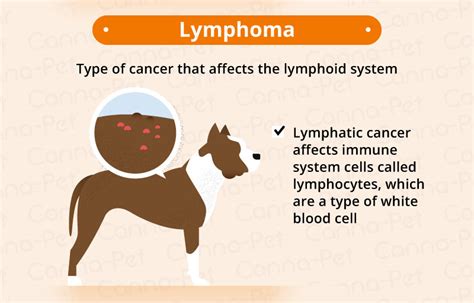Pet cancer is a prevalent and devastating disease, affecting millions of beloved companions worldwide. The advancement of medical research has led to innovative treatment options, but navigating the complexities of oncology can be daunting. This article provides a comprehensive overview of pet cancer, highlighting treatment strategies, comparative approaches, and future trends.

Understanding Pet Cancer
Cancer arises from uncontrolled cell growth and can affect various organs and tissues in pets. Common types include lymphoma, osteosarcoma, and mammary tumors. The disease can be classified based on its stage, behavior, and response to treatment.
Traditional Treatment Approaches
Surgery: Surgical removal of tumors remains a cornerstone of treatment, particularly for localized cancers. Advances in techniques, such as minimally invasive and laser surgery, offer improved precision and reduced tissue damage.
Chemotherapy: This involves the use of cytotoxic drugs to kill cancer cells. Chemotherapy protocols vary depending on the type of cancer and stage of disease. It can be administered orally, intravenously, or topically.
Radiation Therapy: High-energy radiation is targeted at tumors to destroy cancerous cells. External beam radiation and brachytherapy (internal radiation implants) are common modalities.
Comparative Approaches and Future Trends
Immunotherapy: This approach harnesses the pet’s own immune system to fight cancer. Immunotherapies include vaccines, antibodies, and immune checkpoint inhibitors. They can enhance the body’s ability to eliminate cancerous cells.
Targeted Therapy: These treatments specifically target molecular abnormalities associated with certain cancers. By blocking specific pathways, targeted therapy can inhibit tumor growth and spread.
Precision Medicine: Personalized treatment tailored to the unique characteristics of each pet’s cancer. Genetic testing can identify mutations and guide the selection of the most effective therapy.
Treatment Considerations
When choosing a treatment plan for a pet with cancer, factors to consider include:
- Type and stage of cancer
- Pet’s age and overall health
- Potential side effects and long-term prognosis
- Financial implications and owner preferences
Effective Strategies for Managing Pet Cancer
- Early Detection: Regular veterinary checkups and screening tests can help detect cancer at an early stage, when treatment options are more likely to be successful.
- Multidisciplinary Approach: Collaboration between veterinarians, oncologists, and other specialists ensures comprehensive care.
- Palliative Care: This focuses on managing symptoms and improving the pet’s quality of life, especially in advanced stages of disease.
Tips and Tricks for Pet Owners
- Be an advocate for your pet by asking questions and staying informed.
- Consider pet insurance to help cover the costs of cancer treatment.
- Provide a supportive home environment and a nutritious diet.
- Monitor your pet’s response to treatment and report any concerns to your veterinarian promptly.
Reviews of Treatment Options
Surgery: Highly effective for localized tumors; success rates vary depending on cancer type.
Chemotherapy: Powerful but can have significant side effects; response rates vary.
Radiation Therapy: Effective for shrinking tumors but may cause skin irritation and other effects.
Immunotherapy: Promising with potential for long-term benefits; still under investigation.
Targeted Therapy: Highly specific but may be costly and have limited availability.
Market Insights
The global pet cancer treatment market is projected to reach $15 billion by 2025, driven by rising pet ownership and advancements in technology.
Future Trends and Innovations
- Development of personalized treatment plans based on genetic testing.
- Integration of artificial intelligence (AI) to enhance diagnosis and treatment selection.
- Novel drug therapies with improved efficacy and reduced side effects.
Conclusion
Pet cancer is a challenging disease, but advancements in treatment and a collaborative approach offer hope for improved outcomes. By understanding the different options available and considering the unique needs of each pet, owners can make informed decisions that prioritize their companion’s well-being and quality of life.
Tables
Table 1: Common Types of Pet Cancer
| Cancer Type | Frequency |
|---|---|
| Lymphoma | 20-25% |
| Osteosarcoma | 10-15% |
| Mammary Tumors | 5-10% |
| Melanoma | 2-5% |
| Hemangiosarcoma | 1-3% |
Table 2: Treatment Options for Pet Cancer
| Treatment | Mode of Delivery | Target |
|---|---|---|
| Surgery | Removal of tumors | Localized tumors |
| Chemotherapy | Oral, intravenous, topical | Kill cancer cells |
| Radiation Therapy | External beam, brachytherapy | Destroy cancerous cells |
| Immunotherapy | Vaccines, antibodies, inhibitors | Boost immune response |
| Targeted Therapy | Specific molecular pathways | Block tumor growth and spread |
Table 3: Factors to Consider in Treatment Selection
| Factor | Importance |
|---|---|
| Type and stage of cancer | Prognosis and treatment options |
| Pet’s age and health | Suitability for certain treatments |
| Potential side effects | Quality of life and long-term health |
| Financial implications | Treatment costs and long-term care expenses |
| Owner preferences | Values and priorities |
Table 4: Reviews of Treatment Options
| Treatment | Efficacy | Side Effects | Cost |
|---|---|---|---|
| Surgery | High | Varies with type of cancer | Moderate |
| Chemotherapy | Moderate | Nausea, vomiting, hair loss | High |
| Radiation Therapy | High | Skin irritation, fatigue | Moderate |
| Immunotherapy | Promising | Can be moderate to severe | High |
| Targeted Therapy | High | Limited availability, can be costly | High |





















